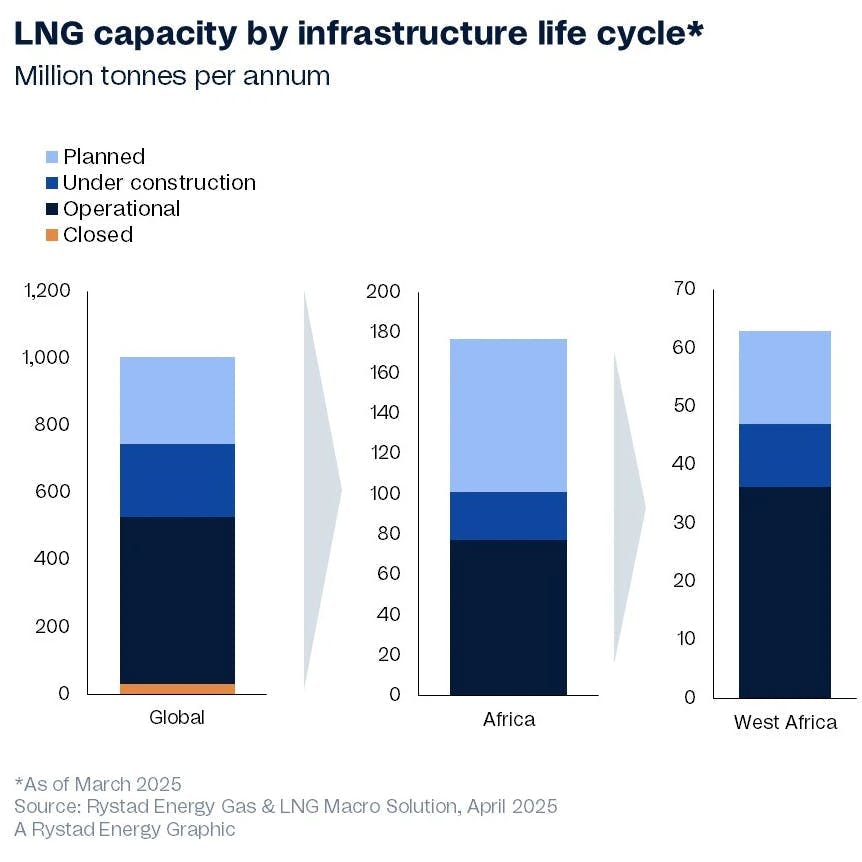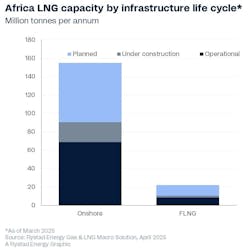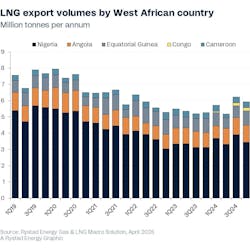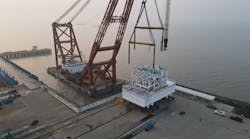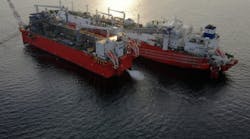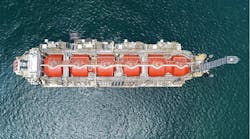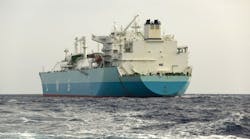Growing need to exploit West Africa’s untapped offshore gas reserves
Nigeria’s LNG exports could rise by 20 MM metric tons by 2030 to help meet growing LNG demand globally, according to a report from Rystad Energy.
This may lead the government to consider alternative solutions such as floating LNG (FLNG) and smaller-scale mini-LNG projects to satisfy both export and domestic demands.
“Nigeria has consistently ranked among the top LNG producers globally, despite export volumes being much smaller than those of the US, Australia and Qatar,” said Antonia Syn, commodity markets analyst at Rystad.
New liquefaction projects led by a combination of onshore developments in Nigeria and Gabon should lift Africa’s overall capacity to 50.6 MMt/year by 2035, supported by numerous FLNG projects that are expected to start operations over the next decade.
Rystad estimates that West Africa's gas resources are located about 65% offshore and 35% onshore. While the onshore sector is more developed, nearly two-thirds of its proven offshore gas volumes (about 16 Bboe) remain undeveloped.
These would be an ideal fit for FLNG technology, the analysts claim, as they are less dependent on vulnerable pipeline infrastructure.
At present, West Africa hosts about 20% of global FLNG capacity, with the potential for further growth if more gas resources are allocated for LNG exports.

